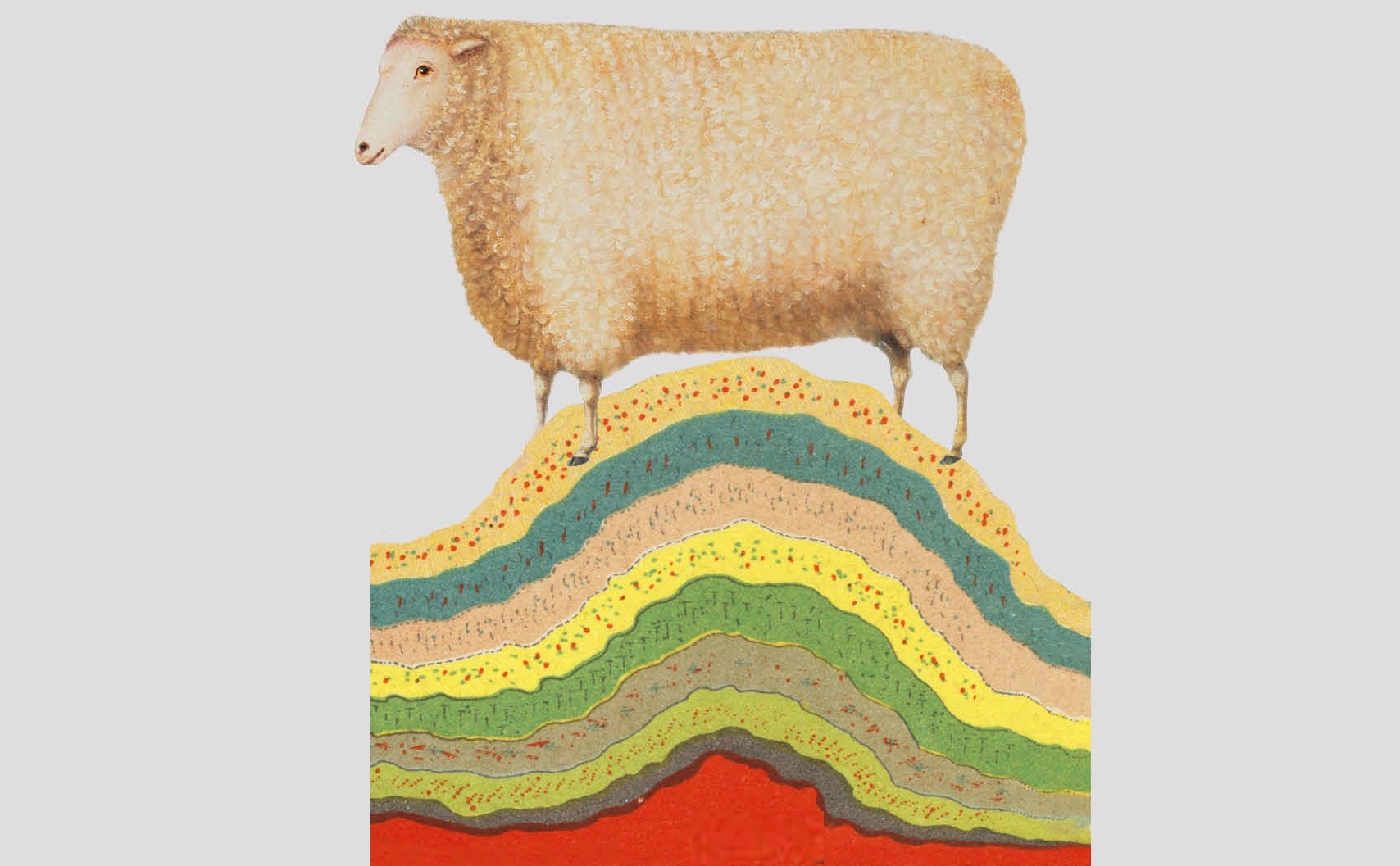Reading Lists
7 Novels About Only Children
Kate McIntyre, author of "Mad Prairie," recommends main characters with no siblings, but plenty of problems

The world of children, aburst with animal energy, strikes only children like me as strange and perhaps a bit vulgar. So we observe. Our lack of siblings makes us unlike our peers. We feel pride and embarrassment at our exceptionalism. Our relationships with our parents tend to be more intense. In nuclear families, our parents outnumber us. We form one leg of a love triangle, and usually we have a favorite parent. We vie with the other parent for our preferred parent’s attention. We know that if both parents are angry at the same time, we have no friend in the home. Only children, if we’re lucky, float through childhood on a double-cloud of parental love. But then, as only children age, we survive our close family. We might find ourselves alone in the world.
Miriam, the main character in my linked story collection Mad Prairie, loses both her parents while she is still in college. She is left vulnerable to bad ideas—her own and those of others. Only children have a reputation for softness, but I’d argue that’s untrue. We engaged with the world of adults early, and that leaves us, if anything, too knowing. Miriam’s greatest mistake is outsize faith in herself. When confronted by structures she can’t understand, in a small town filled with secrets and supernatural energies, she is slow to reach out and find help.
The following seven novels spotlight facets of the experience of the only child—fierce and complicated relationships with parents, friends so close they resemble family, premature adulthood often followed by regression. A good main character is self-possessed, they look at the world around them with a measured gaze and can comment on events in the narrative to add layers of complication or elucidation. Only children make great main characters.
Annie John by Jamaica Kincaid
As Jamaica Kincaid’s Annie John opens, the titular character is a child who lives on the island of Antigua. She loves her mother more than anything, and nothing pleases her more than her mother’s care for her. Her father, she could take or leave:
“When my eyes rested on my father, I didn’t think very much of the way he looked. But when my eyes rested on my mother, I found her beautiful… what a beautiful long neck, and long plaited hair…”
The novel tracks Annie’s growth from childhood to adulthood, which also, both surprisingly and astutely, reads like the end of a long love affair with her mother. Annie’s father works all day as a carpenter, leaving Annie and her mother to tend the house or bathe together with medicinal bark and leaves.
Annie’s harmonious relationship with her mother is disrupted when Annie’s mother encourages Annie’s independence. She encourages Annie to pick her own fabric for a dress, saying, “‘It’s time you had your own clothes. You just cannot go around the rest of your life looking like a little me.’” Annie views this suggestion as a brutal betrayal, but then, on her own, she begins to find her mother’s love suffocating. Annie enters school and develops interests beyond her mother—secret friends and possessions her mother would disapprove of, like a collection of marbles won in unladylike competition. As Annie grows up tall and long-limbed and beautiful, she uncannily looks more and more like the mother from whom she desperately seeks liberation.
Where’d You Go, Bernadette by Maria Semple
Bee, the 13-year-old only child who narrates Maria Semple’s Where’d You Go, Bernadette, is brilliant, which is no surprise considering her parents. Her father, an engineer at Microsoft, delivered the “fourth most-watched TED talk” of all time about a tiny wearable device he invented that lets users move objects with their minds. Her mother, Bernadette, won a Macarthur award for her work in sustainable architecture but now lives a reclusive, phobic existence in the family home, a decaying girls’ school she had planned to renovate. Blackberry brambles poke through the floors, and Seattle’s rains penetrate the roof. After a failed intervention, Bernadette disappears, and Bee determines to locate her.
Just as Bernadette combined readymade materials like salvaged steel beams, trimmings from landscaping, and discarded doorknobs in her buildings, Bee presents her narrative as an assemblage of gossipy emails from parents at the private school Bee attends, meeting notes, press releases, letters, and magazine articles. Where’d You Go Bernadette moves propulsively due to the mystery at its heart, suggested in the title: Where is Bee’s mother? Is she alive or dead? Bee is convinced she knows the answer, and we readers fly through the pages to see if she is right.
Never Mind by Edward St. Aubyn
While Bee and Annie find love and undivided attention at the center of their small families, Patrick Melrose, the main character in five of Edward St. Aubyn’s semi-autobiographical novels, faces a much thornier situation. As the first in the novel series, Never Mind, opens, Patrick’s father is methodically torturing ants in the garden of the family’s fancy estate in the South of France. Five-year-old Patrick courts death by jumping on the rotted wooden cover of a well, as vulnerable to his father’s predations as the drowned ants. Patrick’s mother mixes alcohol with pills and buzzes away in her enormous Buick.
Patrick’s father carries his noble title to the marriage, and his mother brings the wealth. Neither offers love. Unhappiness fogs the scene: these are rich people we don’t envy, and we see in hideous detail how alone and vulnerable Patrick is in his home. Never Mind takes place over a single day, during which an act of unspeakable horror committed by Patrick’s father follows Patrick through the decades, and novels, to follow.
My Year of Rest and Relaxation by Ottessa Moshfegh
The unnamed young adult narrator of Ottessa Moshfegh’s My Year of Rest and Relaxation finds herself at loose ends. Her parents, her only family, died while she was in college, and now, she’s been fired from her job at an art gallery due to frequent naps in the supply closet. She believes in the power of sleep, not merely as a side-effect of depression, but as a goal all its own. She maintains unconsciousness or semi-consciousness for longer and longer periods, with the help of a psychiatrist who makes free with the prescription pad.
Her only friend, Reva, is also an only child, and Reva’s mother is dying of cancer, just as the narrator’s father did. The narrator calls herself an orphan and says of Reva, whom she doesn’t like: “I imagine this is what having a sister is like, someone who loves you enough to point out all your flaws.” The novel takes place on the cusp of 9/11, where the narrator’s personal tragedy and desire to cocoon and emerge reborn is soon to be overlaid by national tragedy, as the sleepy United States of the early aughts wakes up to pain one morning in September.
Nothing to See Here by Kevin Wilson
Nothing to See Here by Kevin Wilson also pairs two young women in their twenties who have a faux-sisterly bond, “something weirder” than friendship. Lillian, the only child narrator, earned a scholarship to a fancy prep school her single mother never could have afforded. Her roommate Madison, heir to a department store fortune and only daughter in a family of four boys, gets caught with drugs. Madison’s father swoops in to offer Lillian’s mother money if Lillian takes the fall for Madison. Lillian cops to the drugs and gets expelled.
Lillian has remarkably low expectations of her loved ones, so she doesn’t take her mother’s, or Madison’s, betrayal personally. Lillian and Madison have stayed in touch through the years, as Lillian landed unceremoniously back in her mother’s attic, working two low-paying jobs, while Madison married a wealthy senator with presidential ambitions and a grand estate. Improbably, Madison now requires Lillian again, this time to help address a unique situation: Madison needs a nanny for her stepchildren, who burst into flames whenever they are angered. This trait is incompatible with her husband’s goal of higher office. Voters like their elected officials to have a normal, non-incendiary family. Will Lillian put aside her own best interest to help Madison? The novel includes an exquisite scene of one-on-one basketball, where years of resentment get worked out on the court.
Mexican Gothic by Silvia Moreno-Garcia
Mexican Gothic by Silvia Moreno-Garcia is, as the title suggests, a contemporary Gothic novel, complete with a huge yet claustrophobic house haunted by a bloody history, young women in peril, and an evil patriarch whose noxious presence seems to seep from the walls. The main characters, Catalina, an only child and orphan, and Noemí, are cousins. Catalina’s aloneness in the world has made her uniquely vulnerable to landing in bad situations. Luckily, she has Noemí on her side.
Noemí travels to the damp, dismal house of Catalina’s new husband’s family and suspects that Catalina’s ill health, originally diagnosed as tuberculosis, has a psychosomatic component. The truth is even darker and wilder. As Noemí’s own dreams grow more and more powerful, she is convinced that she must get Catalina out of the house, but the young women find it extremely difficult to depart. The house, the site of the deaths of hundreds of silver miners, holds supernatural power over its residents. Some families are impossible to escape.
Depraved Indifference by Gary Indiana
Gary Indiana’s Depraved Indifference is third in a loose trilogy of true crime novels. The first two, Resentment and Three Month Fever, follow the parricidal Menendez brothers and Andrew Cunanan, killer of Gianni Versace, respectively. Depraved Indifference tracks two lesser-known miscreants, Sante and Kevin Kimes, who, fictionalized by Indiana, become Evangeline and Devin Slote.
If in Nothing to See Here, the only child Lillian is victim of her mother’s low expectations for her, in Depraved Indifference, Devin is his mother’s willing accomplice as she grifts her way across the country in a “circus of locomotion and calamity.” Though Devin lives without siblings, he is not technically an only child. He has a much younger brother, Darren, whom Evangeline stashes with various relatives so she can maintain her peripatetic agenda of passing bad checks, faking cancer, setting fires to collect insurance money, and abducting foreign workers to serve as unpaid servants at her homes. The bumper crop of crimes is hard to trace and prosecute, because Evangeline and Devin move so adeptly across jurisdictions. We hear little about Darren because he isn’t useful to Evangeline, and what we learn about Devin shows how lonely it is to grow up alone in the radioactive glow of a brilliant, toxic mother, and how easy it is for the son to follow in the mother’s crooked footsteps.









